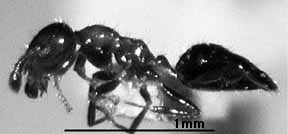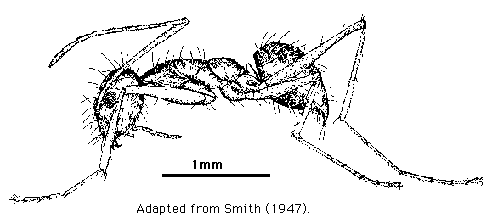
| return to guide introduction | go to genus list |

Uniform habitus; monomorphic; yellow; eyes small to absent; antennae with 9 or fewer segments; mandibles sublinear with 3-4 teeth. Subterranean; common but infrequently collected.

Uniform habitus; monomorphic; eyes normal; antennal segments filiform to gradually increasing in size, not forming a distinct club; antennae 9-segmented; apex of abdomen with inverted cone of setae. Arboreal and terrestrial; common.
CAMPONOTUS (including subgenus Dendromyrmex)


Diverse habitus; polymorphic with distinct major workers (except for two species in subgenus Dendromyrmex); antennal sockets separated from posterior clypeal margin; antennae 12-segmented. Arboreal; common.

Uniform habitus; monomorphic; black, brown, or yellow; antennae 9 or 10-segmented with distinct 3-segmented club; abdomen somewhat tapered, and thus superficially similar to Crematogaster in the field. Arboreal; uncommon.

Uniform habitus; monomorphic; 12-segmented antennae; apex of abdomen with inverted cone of setae; body with abundant stiff erect setae. Arboreal and terrestrial; common.
Page author:
John T. Longino, The Evergreen State College, Olympia WA 98505 USA. longinoj@evergreen.edu